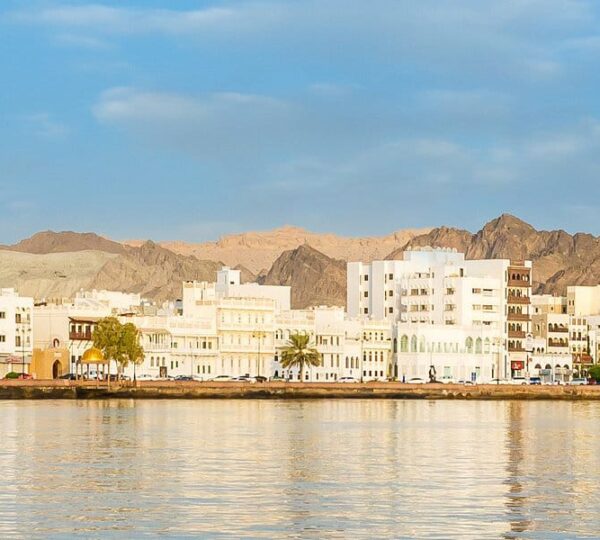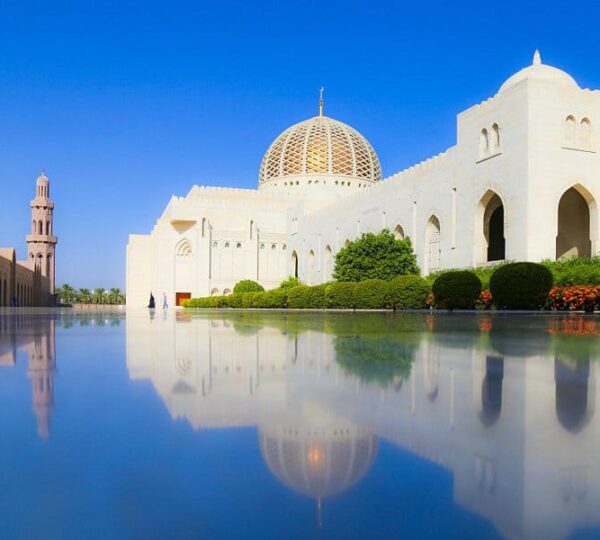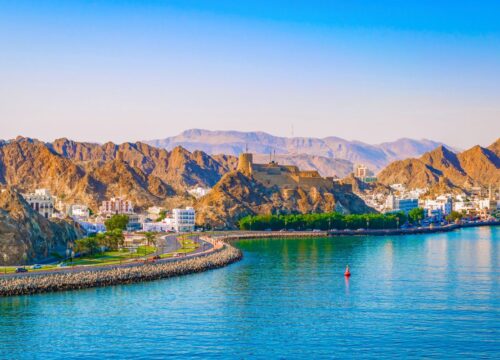Muscat Half-Day Tour OPTION 3
From
Duration
Tour Type
Explore Tours
| Time | ACTIVITY |
| 8:00 AM | DEPARTURE |
| 9:00 AM | VISIT SULTAN QABOOS GRAND MOSQUE |
| 9:45 AM | ENJOY THE SRING HOT WATER IN BAWSHAR |
| 10:15 AM | TAKE A WALK AT QUROM CORNICHE |
| 10:30 AM | PASSING TO THE ROYAL OPERA OUTSIDE VIEW |
| 12:00 NN | LUNCH OPTIONAL |
| 1:30 PM | BACK TO THE HOTEL |
Muscat Gate is one of the easily missed attractions in Muscat that deserve
a lot more attention since behind these walls was timeworn city that
flourished into a present conurbation.
Straddling the road between the Corniche and the old walled city, this
monument cum museum, with the original gates used until the 1970s to keep
land-bound marauders out, marks the position of the old city wall and
introduces Muscat. Muscat Gate used to act as an official gate for the old
city of Muscat in ancient times that used to be shut off after sunset to stop
movement in and out of the city at night. The Gate was renovated and
opened in its current form in the year 1995 with a photographic museum
located on top of the gate that tells the history of Muscat
Included/Exclude
Tour Plan
Al Alam Palace (Flag Palace) is the ceremonial palace of Sultan Qaboos
and lays in the heart of Old Muscat. Built in 1972, the palace is a fine
example of modern Islamic architecture. The official residence of the
Sultan of Oman is regularly used to receive distinguished guests visiting
the country. The sultan resides elsewhere day-to-day, but if the Omani flag
at the palace’s main entrance is raised, Sultan Qaboos is home. The
palace is the centerpiece of a long pedestrian boulevard lined with
manicured garden beds and extravagant government buildings with
polished, white marble walls. Walk along the elegantly decorated
boulevard to arrive at the palace. The building is fronted by four decadent
gold and blue columns and adorned with all the ornate arches, tiling and
carvings befitting of a sultan. Although visitors are only allowed to view the
palace from outside the gates, it is well worth a visit to admire the
architecture. The palace and surrounding gardens and governmental
buildings are an interesting example of contemporary Arabic style. Look to
the right as you approach the palace to see parts of the old city walls and
watchtowers lining the hillside. The Al Jalali and Al Mirani forts, both 16th-
century relics from the Portuguese invasion of Muscat, flank the palace on
either side and can also be seen from the boulevard.
Al Alam Palace is in Old Muscat, looking out to the Gulf of Oman. Visit at
any time of the year. The building looks its best on a bright sunny day
when the blue and gold columns stand out against the sky. Come back at
night to see the palace dramatically lit.
Drive along the Al Alam Road west of the palace. From here you can get
a closer look at the side of the building that faces the water and the two
forts that stand either side. Street parking for a fee is also available here.
Al Jalali Fort, or Ash Sharqiya Fort, is a fort in the harbor of Old Muscat,
Oman. The fort was built by the Portuguese under Philip I of Portugal in the
1580s to protect the harbor after Muscat had twice been sacked by Ottoman
forces. It fell to Omani forces in 1650. During the civil wars between 1718
and 1747, the fort was twice captured by Persians who had been invited to
assist one of the rival Imams. The fort was extensively rebuilt later.
At times, Al Jalali served as a refuge or a jail for a member of the royal family.
For much of the 20th century it was used as Oman's main prison, but this
function ended in the 1970s. Fort al-Jalali was restored in 1983 and
converted into a private museum of Omani cultural history that is accessible
only to dignitaries visiting the country. Exhibits include cannons, old muskets
and matchlocks, maps, rugs, and other artifacts.
Bait Al Zubair is cultural foundation started initially with a private museum
that opened its carved wooden doors to the public in 1998. It is funded by its
founders, the Zubair family. In 2005 the family established the Bait Al Zubair
Foundation as the cultural and social arm of the family-owned business, The
Zubair Corporation.
The Foundation manages the cultural space and develops projects relating
to culture and heritage, the arts, the community, history and publishing. Bait
al Zubair displays the family’s collection of Omani artefacts that spans a
number of centuries, and is considered to be the finest that is privately
owned. Its ethnographic artefacts reflect highly specialized inherited skills
that define Oman’s society, both past and present.
It is one of the country’s architectural icons and in 1999 was the proud
recipient of His Majesty Sultan Qaboos’ Award for Architectural Excellence,
the first time it was awarded in Oman. The complex consists of five separate
buildings (Bait Al Bagh, Bait Al Dalaleel, Bait Al Oud, Bait Al Nahdhah and
Gallery Sarah) as well as a garden with a number of traditional features, café
and gift shop.










